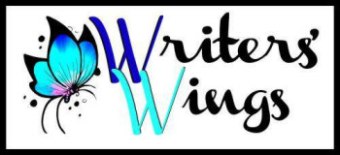![Pageflex Persona [document: PRS0000035_00022]](https://writemindsauthors.files.wordpress.com/2014/01/shakazhan-front-a-copy.jpg?w=188&h=300) All authors have their outtakes—scenes that didn’t make the final cut. Some are embarrassments that we regret ever writing and will probably never see the light of day. Others are wonderful favorites that didn’t advance the plot. Below is one of these scenes. I love it, but it simply slowed things down. I could imagine my readers yelling at me, “Get on with it!”, so I cut it. I couldn’t seem to delete it completely. Instead, it went into a file called Cut from Shakazhan. Now, I’m glad I kept it.
All authors have their outtakes—scenes that didn’t make the final cut. Some are embarrassments that we regret ever writing and will probably never see the light of day. Others are wonderful favorites that didn’t advance the plot. Below is one of these scenes. I love it, but it simply slowed things down. I could imagine my readers yelling at me, “Get on with it!”, so I cut it. I couldn’t seem to delete it completely. Instead, it went into a file called Cut from Shakazhan. Now, I’m glad I kept it.
Before reading, in case you haven’t read Shakazhan yet, there are several sentient ships. I don’t mean just cognizant, I mean fully aware beings who cater to their crews by creating whatever they need. Want a bigger bed? The ship will provide it. Thirsty? What’s your favorite beverage? Need privacy? The ship will create a private room that only you can find. They are characters just as much as the humans and aliens are. Their names are Anvil, Hammer – her mate and Styx, their daughter.
The Kindred are another alien species who are highly advanced technologically and telepathically. This scene takes place on board one of the alien ships. Ariella and Caprilla are Fellician warriors commonly called The Cats.
For fun, they put together a demonstration from each class. The camaraderie was growing between the two disparate groups of people. Marines and Miners side by side, sparring happily and cheering each other’s success.
Matilda and Ariella took the stage. Ariella’s tawny coat shown like silk in the lights. She wore the traditional short sarong of the Kaboratta dancer.
Matilda wore the same type of sarong, and had a diminutive bikini top over her chest. Her long, dark hair was pulled tightly back in a cluster of three braids and covered with a matching bandana. Each of them wore six hoops per ear and Matilda had her bracelets in place. Their swords were in a block beside them.
They began with the Ritual of Weighing, where each of the competitors chose her weapon. Taking their stance across from one another, a sharp snap of a bongo signaled the start of the match. Matilda attacked quickly and low, going for her opponent’s knees. Ariella’s reach was longer, but Matilda’s comparatively diminutive stature next to hers, made getting under her guard easy.
Ariella swatted her away with her tail as if she were a gnat. Matilda flew across the stage, landing with a grunt. Shaking her head, she rose, taking her stance again.
The bongo signaled as before, Ariella attacked, moving in on Matilda’s exposed left side. Maneuvering rapidly, Matilda jumped for her block, grabbing her dagger as she sped by. She parried Arriella’s attack, barely avoiding a blow from her other side. Ariella had grabbed her dagger too. Matilda caught Ariella’s knife in her claws, which she had extended for that purpose.
A gasp from the crowd as Ariella extended hers, grappling with Matilda briefly before the woman moved out the of big cat’s range. The two of them slashed, kicked, and danced around the stage, hardly a sound but the bongo accompaniment and the clang of their weapons above their ragged breathing.
Ariella stooped to slash at Matilda’s legs. Matilda jumped lightly up and rolled over Ariella’s back, landing in a crouch on the other side. Back and forth they dodged and parried, swooping into an opening and back out again to avoid their opponent’s blows.
It looked as if Matilda were winning, then Ariella rushed in and got her pinned to one side of the stage, advancing, blade held ready before her, preparing for the killing blow. Matilda, calmly taking a deep breath, ran at Ariella, sprung forward and up, doing a handless cartwheel over her head, flipped as she was landing, spinning to face her opponent. Getting her feet under her, she launched herself at the large feline, knocking her down and sitting on her chest, blade ready at the throat, Matilda prepared for the kill.
Striking her blow, she didn’t notice Ariella’s dagger coming up behind her, deploying the handle blade until too late. Both blades struck home simultaneously, blood sprayed everywhere.
Gasps of horror filled the room. Wil and Caprilla leapt onto the stage, calling for doctors. Wil lifted Matilda’s limp form off Ariella’s chest, clutching her to him, covered in blood.
Caprilla gently moved Ariella, taking her in his arms, wiping the blood from her fur, looking for the wound. There wasn’t any. There were no marks on either woman, just a lot of blood.
Unable to contain themselves longer, Ariella and Matilda levered themselves upward to horrendous applause. Even Wil and Caprilla joined the laughter and clapping.
“Ladies, that was the most amazing display of skill I’ve ever seen! I congratulate you!” Caprilla kissed each of them on the hand, helping Ariella to her feet. Wil scooped Matilda up, kissing her possessively. Caprilla held Ariella close to him, not letting go. Her protests were merely a ploy. She didn’t wish release or she would’ve taken his head off.
“Don’t ever scare me so again, Ariella. I feared you dead.”
She looked slyly at him. “Tell me, Caprilla, would it matter so very much?”
“It would wound me to my heart to lose you. I’m an old fool, perhaps. It took seeing you die before me to make me realize this.”
In a rare tender moment, Ariella kissed Caprilla and rubbed noses with him showing her affection.
“All is well then, Caprilla. For I’ll never do so again, I promise. But you must also promise me something.”
“What would that be, Ariella, anything within my power.” She whispered something in his ear, making him chuckle, then guffaw. “I believe that is something I can manage, Ariella. I swear.” He held up his hand as if taking an oath.
Later, Matilda took Ariella aside. “What did you ask Cap to do?”
“It is rather something I asked him not to do. I made him promise he will no longer bed Escascia. In return, I promised not to take Cavitus or Errollic to my bed. It is a bargain which pleases us both.” She smiled happily, though to many it would look more like a snarl.
Matilda grinned, but said nothing. It wasn’t necessary. She was pleased to know that her friends were happy, that was enough.
© Dellani Oakes 2014


